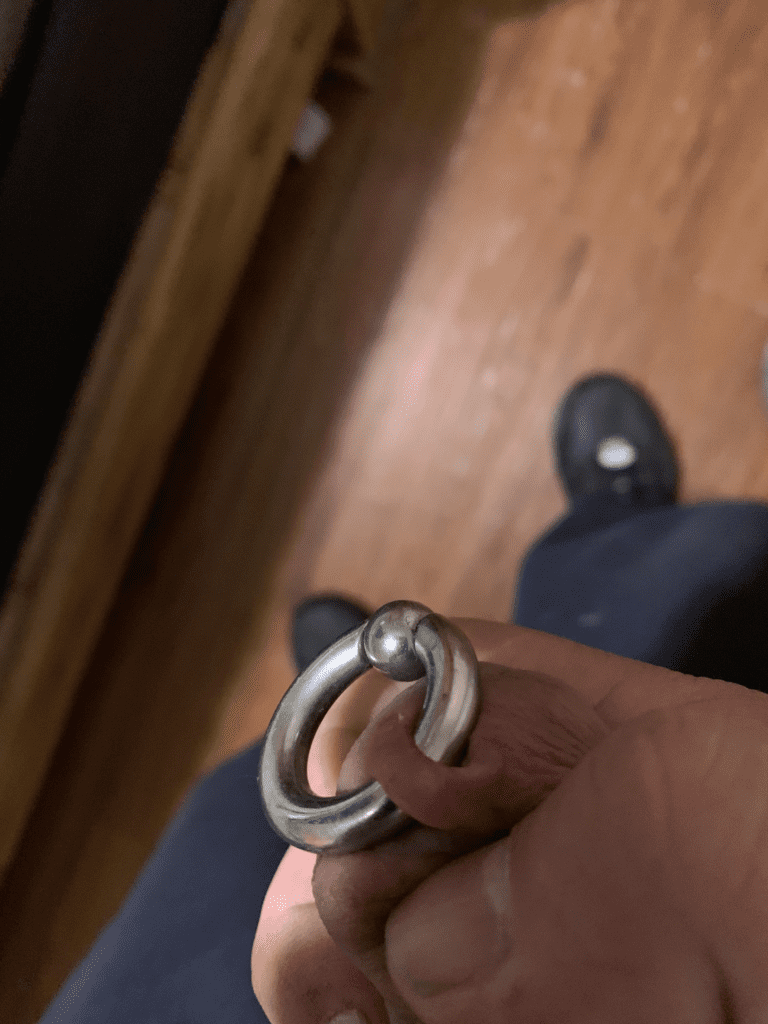What Is Prince Albert Piercing & How Does It Work?


Body piercing has been a form of self-expression and cultural practice for centuries. One of the most daring and intimate piercings is the Prince Albert piercing, named after Queen Victoria’s husband, Prince Albert. This type of genital piercing has gained popularity among individuals seeking unique body modifications.
In this blog post, we’ll explore what a Prince Albert piercing entails, the tools and kits used in the process, the associated costs, and the advantages and disadvantages of this intimate form of self-expression.
How a Prince Albert Piercing is Done


A Prince Albert piercing involves perforating the lower portion of the penis, typically passing through the urethra and exiting the top of the glans (head). The procedure is performed by a professional piercer in a sterile environment. Before the piercing, the piercer will clean the area and mark the entry and exit points for accuracy.
During the process, a receiving tube is often used to guide the needle through the chosen location. The needle is then carefully inserted, creating a channel for the jewelry. Once the needle is removed, the piercer will swiftly insert the chosen jewelry, which is commonly a curved or straight barbell.
READ ALSO: What is Jacob's Ladder Piercing? Everything You Need to know
Types of Prince Albert Piercing
There are two other popular types:
- Reverse PA: goes through the urethra and out of the top of the shaft, behind the head instead of underneath
- Deep shaft reverse PA: comes out of the top of the shaft much farther down, far away from the head
What does it look like?


Prince Albert Piercing Tools and Kits Required


Performing a Prince Albert piercing requires specialized tools and kits to ensure the safety and precision of the procedure. Some of the essential tools and kits include:
- Sterilized needles: Used for creating the piercing channel.
- Receiving tube: Helps guide the needle through the tissue.
- Forceps: Aid in holding and positioning the tissue during the piercing.
- Sterile gloves and surgical drapes: To maintain a hygienic environment.
- Disinfectants: Used to clean the area before and after the piercing.
- High-quality body jewelry: Curved or straight barbells made from surgical steel or titanium are common choices for Prince Albert piercings.
What types of jewelry are used for this piercing?
Jewelry commonly used in a PA piercing includes:
- Circular barbell: horseshoe-shape with removable beads on both ends
- Captive bead ring: circular ring with a bead where the ends meet
- Straight barbell: rod-shape with removable beads on both ends
- Bent barbell: similar to a straight barbell, but with a slight curve from end to end
- PA wand: long and straight with a semi-cross shape at the end, meant to be inserted into the urethra with beads on the outside at the urethral opening and the top of the shaft. This is a type of “play” jewelry used for sounding. It isn’t ideal for new piercings, but you can work up to it.
The Cost of Having a Prince Albert Piercing
The cost of getting a Prince Albert piercing varies depending on factors such as the location of the piercing studio, the experience of the piercer, and the quality of the jewelry used. On average, the cost can range from $50 to $150, including the piercing fee and the price of the jewelry. It’s crucial to prioritize safety and hygiene over cost, so choosing a reputable and professional piercer is essential.
READ MORE: Prince Albert Piercing Vs. Jacob's Ladder Piercing: A Comprehensive Comparison
Advantages of Prince Albert Piercing
- Aesthetics: For many individuals, a Prince Albert piercing can be aesthetically appealing and can add a sense of uniqueness to their body art.
- Sexual Stimulation: Some people report increased sexual pleasure due to the pressure the jewelry exerts on sensitive areas during sexual activities.
- Personal Empowerment: Like other body modifications, getting a Prince Albert piercing can provide a sense of personal empowerment and confidence.
Disadvantages of Prince Albert Piercing
- Pain and Healing: The piercing process can cause discomfort, and the healing time can take several weeks or even months.
- Infection and Complications: Improper aftercare or hygiene can lead to infections, migration, or rejection of the piercing.
- Urination Difficulties: Some individuals may experience initial challenges while urinating due to swelling or the presence of jewelry in the urethra.
Important Considerations
Before getting a Prince Albert piercing, it’s crucial to consider the following:
- Choose a Professional Piercer: Ensure the piercer is experienced, uses sterile equipment, and provides aftercare instructions.
- Follow Aftercare Guidelines: Proper cleaning and hygiene are essential for preventing infections and promoting healing.
- Pain and Healing: Understand the potential discomfort and healing time associated with the piercing.
- Personal Comfort: Assess your own comfort levels and motivations for getting the piercing.
How long does it take to heal?
A PA piercing heals within 2 to 4 weeks. Your piercing may heal slower if you don’t follow proper aftercare instructions.
A little pain and swelling are normal during the first few weeks and will become less noticeable as your piercing heals.
See your piercer or doctor if you experience these symptoms alongside:
- yellowish or greenish pus
- skin that feels hot when you touch it
- fever
Conclusion
A Prince Albert piercing is an intimate and adventurous form of body modification that requires careful consideration and professional guidance. For those willing to embrace this unique piercing, the aesthetic appeal and potential sexual benefits may be rewarding.
However, it’s essential to prioritize safety, hygiene, and personal comfort throughout the process to ensure a positive experience. Remember, body modifications are a personal choice, and making an informed decision is key to a successful and satisfying piercing journey.








